La memoria es frágil y otras verdades teologales (SPA-ENG)
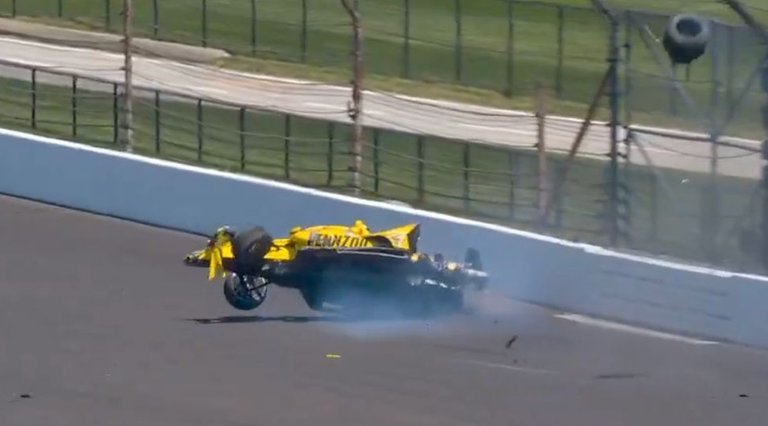
En la tarde de ayer pude ver un video sobre el terrible accidente de Scott McLaughlin en las pruebas previas a la clasificación para la icónica competencia de las 500 millas de Indianápolis, tremendo, aunque por suerte sin consecuencias físicas para el piloto.
Este hecho sumado al espectacular accidente de Yuki Tsunoda y el menos grave de Franco Colapinto en la clasificación para la carrera de Imola, provocaron que me pusiera a pensar sobre los accidentes en competencias, luego de algunas investigaciones y búsqueda de antecedentes he llegado a la conclusión de que son mucho más frecuentes de lo que recordamos, inclusive involucrando a pilotos que hoy en día son indiscutibles y catalogados de extraordinarios, aunque sus pasados los condenen.
Todo esto tiene además una connotación diferente si pensamos en los últimos acontecimientos de movimiento o cancelación de pilotos en la F1, justamente por este tipo de problemas aunado al de los bajos rendimientos. Repasemos: Logan Sargeant, Checo Perez, Lian Lawson y Jack Doohan solo en este último período de un año.
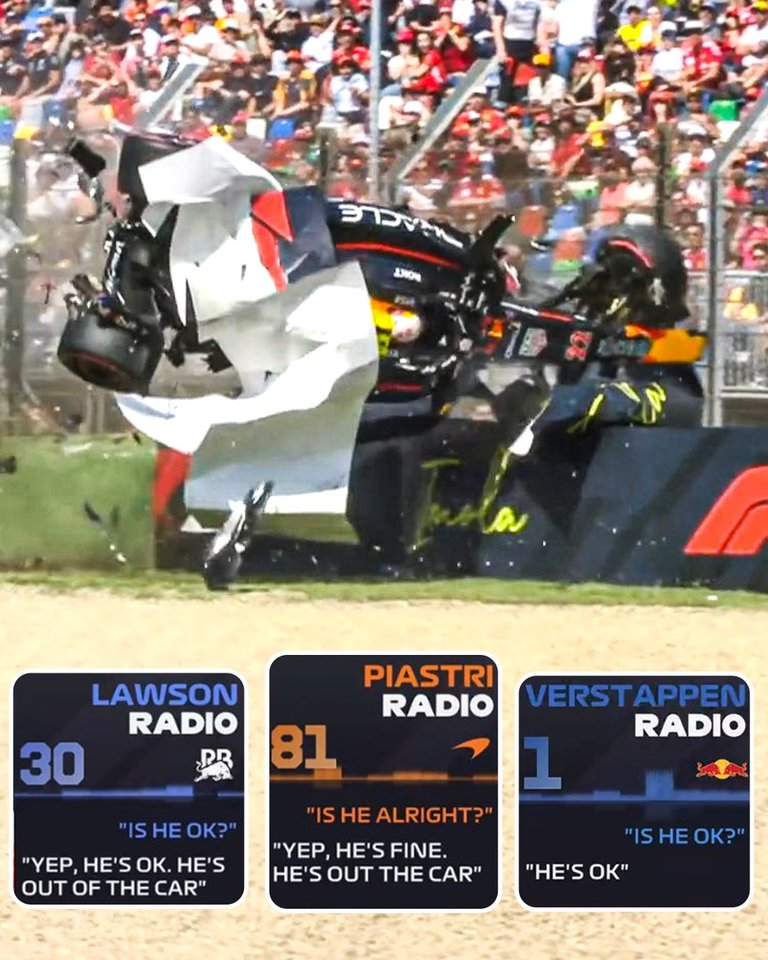
Si yo preguntara, para poner un ejemplo, ¿en cuántos accidentes estuvo involucrado Max Verstappen desde sus comienzos hasta fines del año anterior? muy pocos y quizás ninguno de mis lectores lo sabría con exactitud, tampoco yo, no se vayan a creer. Me ayudé viendo diferentes fuentes de información.
Si bien nadie lleva una estadística específica sobre este tema, pude conseguir una cifra que dejará pasmado a más de uno: veintinueve incidentes. Si, el cuádruple y actual campeón del mundo, el que la mayoría de los seguidores de la F1 no dudan en indicar que es el mejor piloto de la actualidad y uno de los mejores de todos los tiempos, ha tenido esa cantidad de incidentes, con otros pilotos, errores individuales o alguna falla mecánica grave, no todas determinaron el abandono de una competencia o de la clasificación, pero si la mayoría.
El peor año del neerlandés fue el 2018, cuando en las 6 primeras carreras de la temporada estuvo involucrado en 9 incidentes. Y aquí lo tenemos, en la actualidad parecería que es imposible que cometa un error grave.
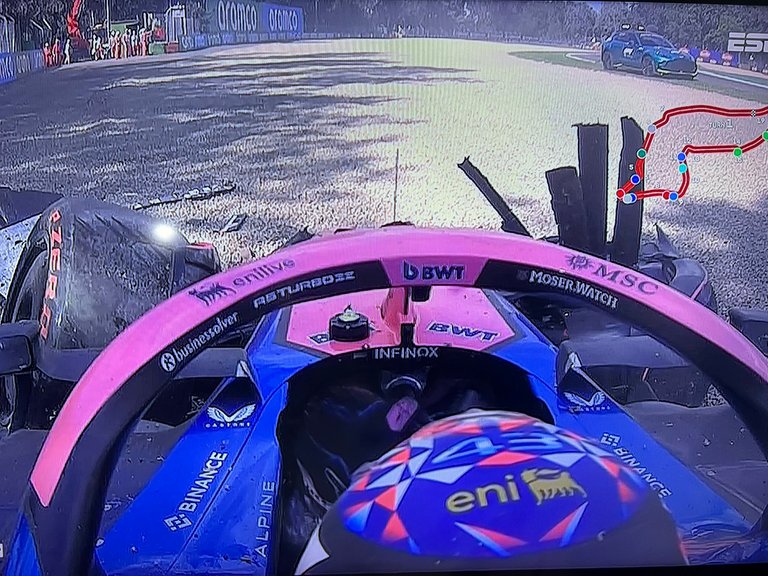
El piloto considerado el más peligroso en toda la historia de la F1 fue Andrea de Cesaris, un italiano que corrió en 208 grandes premios y hoy en día ostenta el nada gratificante, aunque curioso record de ser el segundo piloto en la categoría con más carreras corridas sin ningún triunfo. Se ganó el apodo de "Andrea de Crasheris" al abandonar en 148 grandes premios, la mayoría de ellos por chocar su vehículo. Sin embargo, podemos decir sin lugar a dudas que el italiano fue un piloto con mucha suerte, corrió en McLaren, Alfa Romeo, Dallara, Ligier, Tyrrel y Minardi entre otros importantes equipos, parece que los parámetros utilizados en aquellos tiempos para medir el rendimiento y fundamentalmente los gastos ocasionados por un piloto por colisionar no eran los mismos de ahora.
Quizás De Cesaris no sea tan recordado pero que me dicen de Romain Grosjean quien se cansó de chocar y hasta recibió la sanción de una carrera en 2012 por haber causado múltiples colisiones, Alonso y Schumacher, también han tenido lo suyo, en ambos quizás por el carácter combativo que los ha caracterizado a lo largo de sus carreras, algo similar a lo que hoy en día vemos con Verstappen.
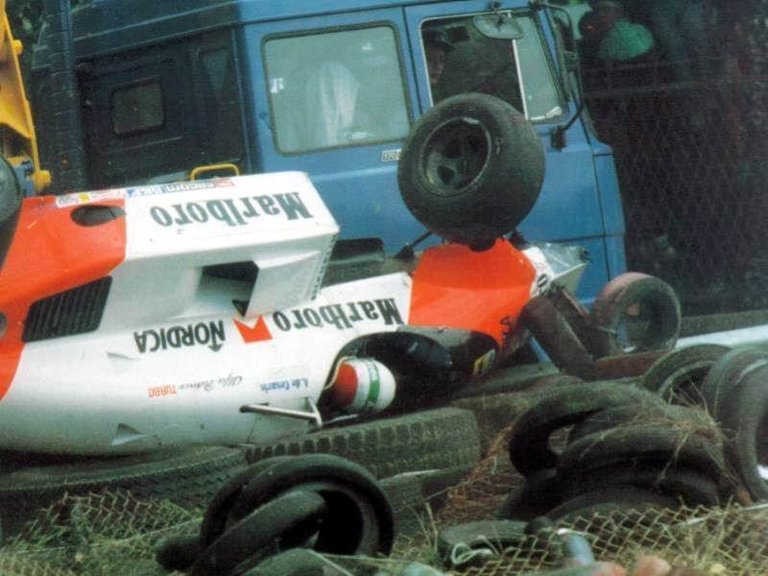
Luego de ver todos estos antecedentes me he reconciliado con Colapinto, el sábado fui muy duro con él por haber arruinado su clasificación y por cometer un error que según mis escasos parámetros y falta de conocimiento entendí como una tontería. Sin embargo, al repasar la historia de algunos pilotos debo reconocer varias cosas, la primera es que nadie está exento de un accidente cuando el vehículo que conduce puede desarrollar velocidades por encima de los 300 km/h, la segunda es que la memoria de las personas es limitada y solemos olvidar detalles y antecedentes que son importantes a la hora de juzgar algo y la tercera es que a lo largo de la historia de la Fórmula 1 y de las carreras de autos en general, estos accidentes han creado conciencia y se ha mejorado la seguridad hasta límites insospechados.
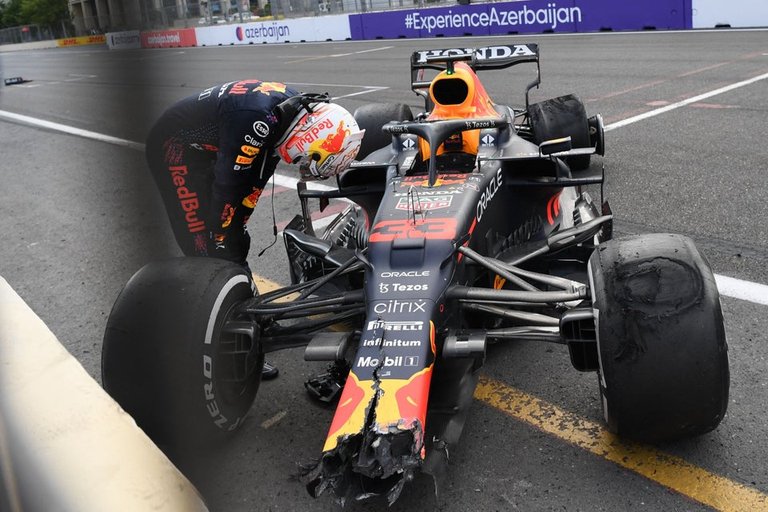
Quizás a los pilotos de hoy se los juzgue más severamente que antes, pero al menos tienen suerte de contar con elementos de seguridad que les permite seguir vivos, como Scott McLaughlin y Yuki Tsunoda.
Memory is fragile, and other theological truths
Yesterday afternoon, I watched a video about Scott McLaughlin's terrible accident during pre-qualifying testing for the iconic Indianapolis 500. It was tremendous, though fortunately without any physical consequences for the driver.
This incident and Yuki Tsunoda's spectacular accident, and Franco Colapinto's less serious one in qualifying for the Imola race made me think about accidents. After some research and background checks, I've concluded that they are much more frequent than we remember, even involving drivers who are now indisputably considered extraordinary, even though their pasts condemn them.
All of this also has a different connotation if we consider the recent events of driver turnover and cancellations in F1, precisely due to these types of problems, combined with poor performance. Let's review: Logan Sargeant, Checo Perez, Lian Lawson, and Jack Doohan in this last one-year period alone.
If I were to ask, for example, how many accidents Max Verstappen was involved in from his early days until the end of last year? Very few, and perhaps none of my readers, would know exactly, nor would I, so don't believe me. I helped myself by looking at different sources of information.
While no one keeps specific statistics on this topic, I was able to come up with a number that will astonish more than a few: 29 incidents. Yes, the four-time and current world champion, the one most F1 fans readily agree is the best driver today and one of the best of all time, has had that many incidents, involving other drivers, individual errors, or some serious mechanical failure. Not all of them resulted in his retiring from a race or qualifying, but most did.
The Dutchman's worst year was 2018, when he was involved in 9 incidents in the first 6 races of the season. And here we have it, currently, it would seem impossible for him to make a serious mistake.
The driver considered the most dangerous in the entire history of F1 was Andrea de Cesaris, an Italian who raced in 208 Grands Prix and today holds the unrewarding, though curious, record of being the second driver in the category with the most races without a win. He earned the nickname "Andrea de Cesaris" by retiring from 148 Grand Prix, most of them due to crashing his car. However, we can say without a doubt that the Italian was a very lucky driver. He raced for McLaren, Alfa Romeo, Dallara, Ligier, Tyrrell, and Minardi, among other important teams. It seems that the parameters used back then to measure performance and, fundamentally, the costs incurred by a driver due to a crash were not the same as they are today.
De Cesaris may not be as well-remembered, but what about Romain Grosjean, who grew tired of crashing and even received a one-race ban in 2012 for causing multiple collisions? Alonso and Schumacher have also had their share, both perhaps due to the combative nature that has characterized them throughout their careers, something similar to what we see today with Verstappen.
After seeing all this, I've reconciled with Colapinto. On Saturday, I was very harsh on him for ruining his qualifying and for making a mistake that, based on my limited criteria and lack of knowledge, I understood as foolish. However, when reviewing the history of some drivers, I must acknowledge several things. First, no one is immune to an accident when the vehicle they're driving can reach speeds above 300 km/h. Second, people's memory is limited, and we tend to forget details and background information that are important when making judgments. Third, throughout the history of Formula 1 and motor racing in general, these accidents have raised awareness and improved safety to unprecedented levels.
Perhaps today's drivers are judged more harshly than before, but at least they're lucky to have safety features that keep them alive, like Scott McLaughlin and Yuki Tsunoda.
Héctor Gugliermo
@hosgug
Solo puedo agradecer estos datos para poder poner en su justa medida el valor deportivo de cada piloto y, como bien dices pedir disculpas a Colapinto por los criterios vertidos, aunque, sigo pensando que en el ánimo de demostrar su calidad y querer hacerlo de la mejor manera posible pueden aparecer episodios como este. Feliz jornada.
Lo que estoy viviendo con el tema corriente y conexión es de locos. Salud y saludos.
Lamento leer eso sobre la electricidad y la internet. Esperemos que se solucione pronto.
Respecto a la nota solo quise expresar algo más sobre lo que ya había dicho @fermionico en sus comentarios a mi publicación anterior, esto es muy difícil.
Saludos @tonyes